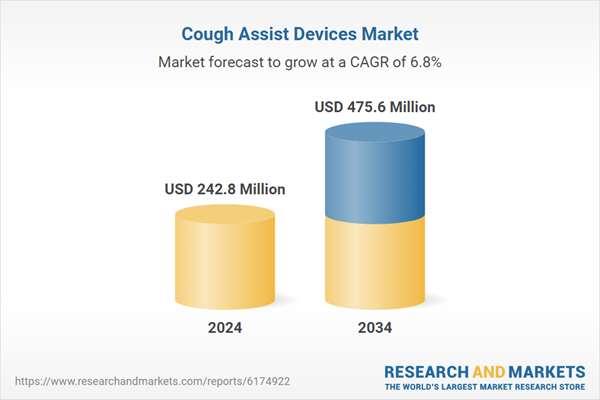This growth is being fueled by rising incidences of chronic respiratory illnesses, increasing aging populations, and higher awareness around non-invasive airway clearance options. As respiratory health becomes a bigger public health priority, demand for advanced respiratory care devices continues to rise. The shift toward home-based healthcare and improvements in medical technology are further advancing the use of cough assist solutions, as these devices help reduce hospital admissions and improve patient outcomes. Healthcare providers, patients, and caregivers alike are increasingly recognizing the clinical value of early and effective airway secretion clearance.
Cough assist devices, built to deliver mechanical insufflation-exsufflation, have seen significant growth in adoption due to their ability to improve breathing and prevent respiratory complications in patients with compromised lung function. Modern versions of these devices are compact, user-friendly, and optimized for use in home care settings, where convenience and independence are essential. Growing knowledge about these tools across various care settings, including hospitals, specialty clinics, and home environments, has expanded their usage among individuals with neuromuscular disorders and chronic pulmonary diseases.
The automatic segment held a 72.2% share in 2024, as these devices provide enhanced secretion clearance and require minimal user input. The appeal of automatic systems lies in their high degree of customization, allowing physicians to adjust pressure settings and timing cycles based on individual patient needs. They offer improved consistency, better comfort, and more efficient therapy delivery compared to manual alternatives, making them the preferred choice in modern respiratory care.
The face masks segment held a 34.8% share in 2024, owing to their suitability for patients who may struggle to use mouthpieces. This includes young children, older adults, and individuals with significant neuromuscular impairments. The primary strength of face masks lies in their ease of use, as they eliminate the need for precise coordination from patients and deliver consistent treatment, improving overall therapeutic effectiveness in vulnerable groups.
United States Cough Assist Devices Market was valued at USD 83.6 million in 2024. The region’s consistent growth is driven by the high prevalence of chronic respiratory conditions and the increasing number of patients affected by disorders that reduce the body’s ability to clear airway secretions. The growing elderly population and strong demand for non-invasive therapies are accelerating the adoption of cough assist technologies throughout the healthcare system.
Key companies active in the Global Cough Assist Devices Market include Vitalograph, Smith’s Medical (ICU Medical), Dima Italia, ABM Respiratory Care, Seoil Pacific, Air Liquide Healthcare, West Care Medical, Breas Medical, Ventec Life Systems, PARI, Baxter, Physio Assist (Simeox), and Philips. Companies in the cough assist devices space are prioritizing technological upgrades to make their products more portable, programmable, and user-friendly, aligning with the rising shift toward home-based care. Key players are heavily investing in R&D to develop next-generation systems that deliver more personalized, efficient therapies. Strategic mergers, acquisitions, and partnerships are being pursued to expand global reach and strengthen distribution networks.
Comprehensive Market Analysis and Forecast
- Industry trends, key growth drivers, challenges, future opportunities, and regulatory landscape
- Competitive landscape with Porter’s Five Forces and PESTEL analysis
- Market size, segmentation, and regional forecasts
- In-depth company profiles, business strategies, financial insights, and SWOT analysis
This product will be delivered within 2-4 business days.
Table of Contents
Companies Mentioned
The key companies profiled in this Cough Assist Devices market report include:- ABM Respiratory Care
- Air Liquide Healthcare
- Baxter
- Breas Medical
- Dima Italia
- PARI
- Philips
- PhysioAssist (Simeox)
- Seoil Pacific
- Smiths Medical (ICU Medical)
- Ventec Life Systems
- Vitalograph
- West Care Medical
Table Information
| Report Attribute | Details |
|---|---|
| No. of Pages | 130 |
| Published | September 2025 |
| Forecast Period | 2024 - 2034 |
| Estimated Market Value ( USD | $ 242.8 Million |
| Forecasted Market Value ( USD | $ 475.6 Million |
| Compound Annual Growth Rate | 6.8% |
| Regions Covered | Global |
| No. of Companies Mentioned | 14 |









